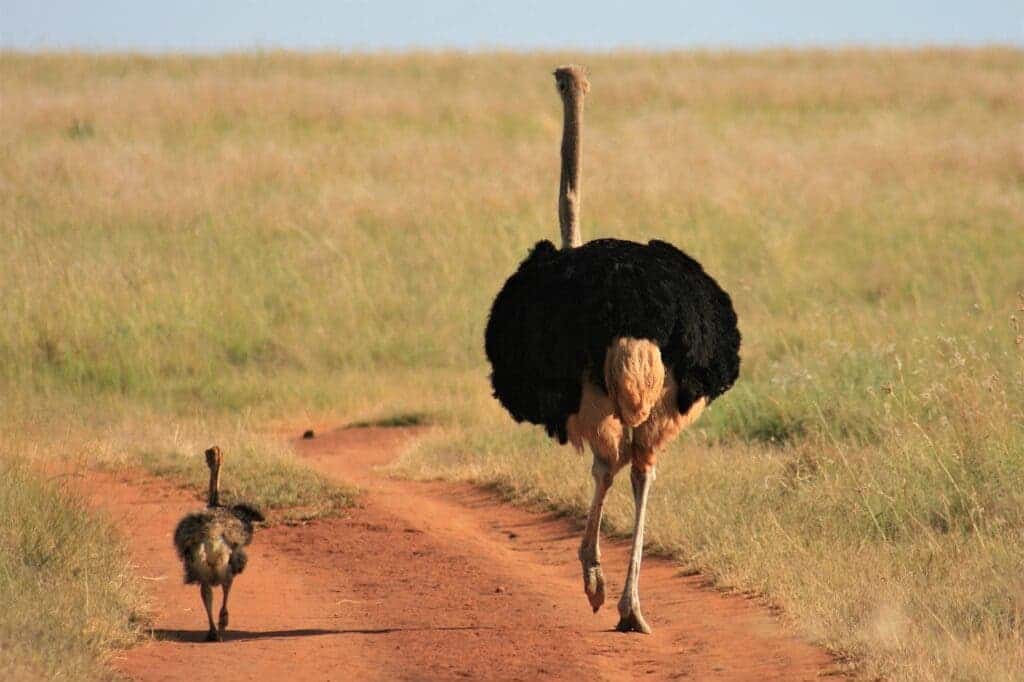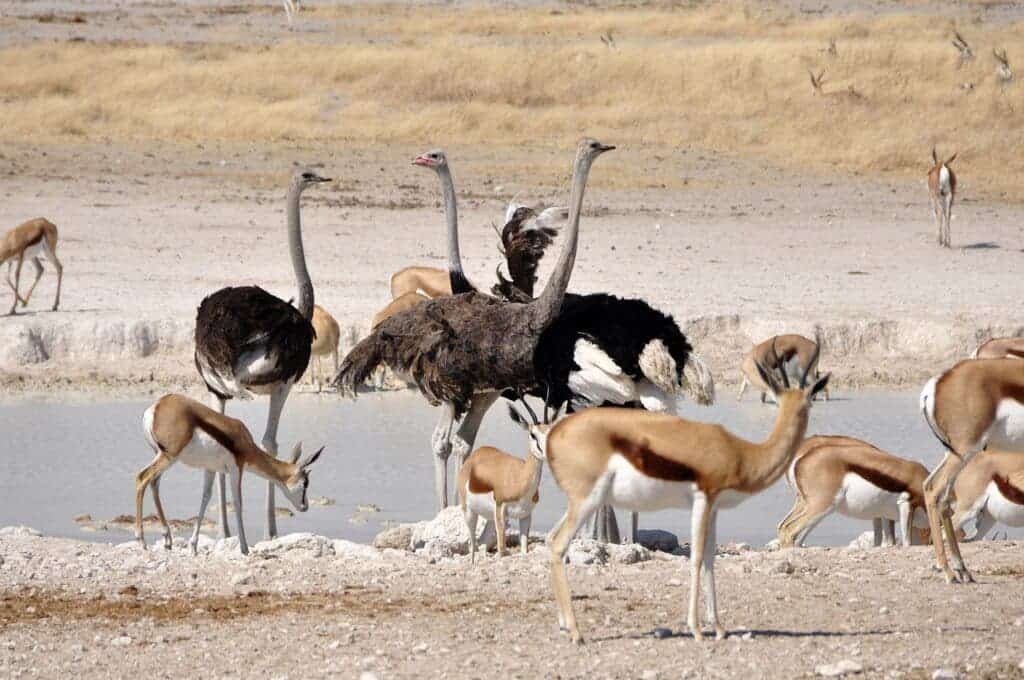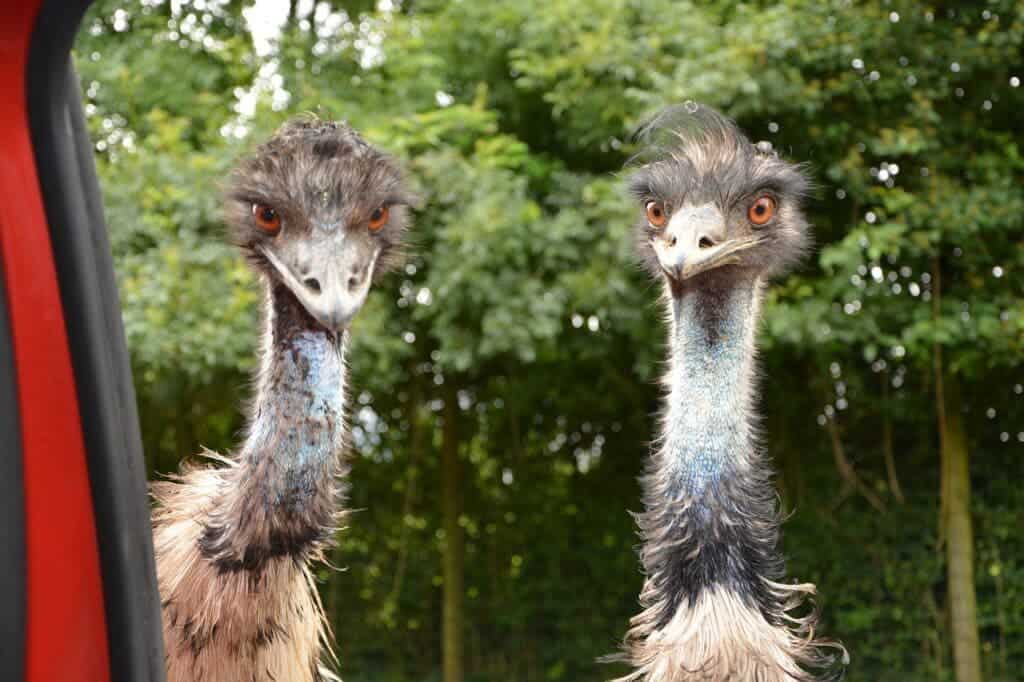The ability to fly is something most of us envy birds for. But not all bird species can soar through the skies — let’s see why.

Penguins, ostriches, emus, kiwis; these are just a handful of the roughly 60 species of birds alive on Earth today that couldn’t fly to save their lives. And, all things considered, that doesn’t sound like a very fun way to go about being a bird. So why have these feathered critters renounced flight altogether?
Well, there’s no single answer. For some species, like chickens, the story is that humans bred the ability to fly partially out of them. For wild species, it’s a bit more complicated. They are scattered all over the world and come in all shapes and sizes, and live in a wide range of ecosystems and landscapes. Based on these observations, it seems reasonable to assume that flightlessness evolved independently in different bird lineages — and genetic data suggest that this did happen, at least five times throughout history.
Today, let’s take a look at the world’s flightless birds and see what, exactly, keeps them from soaring high.
Grounded fliers
One of the largest families of birds today is the ratites. It includes a diverse range of long-necked, long-legged, mostly large and mostly flightless birds — with the ostrich being the largest ratite currently alive. In fact, it is the biological family that includes the single largest number of flightless birds on Earth. As such, they can teach us quite a lot about the birds that live their lives on the ground.
Among the most defining traits of ratites is their lack of a carina bone (or ‘keel’) on the sternum, and a particular structure of the bones in the palate, the roof of their mouths. The absence of the carina is the main element preventing these birds from ever taking flight.
Birds rely on large and very powerful chest muscles to support flight — this is why chicken breasts are so meaty. But in order for these muscles to be able to flap wings during flight, they need a solid object to anchor to. Carina bones perform that role, creating a large surface that the muscles can bind to. They generally take an elongated, thin shape, resembling the keel of ocean-going vessels in form (hence the name). Those birds that lack such a bone could not produce the necessary forces to stay in flight even if they had well-developed wings.

With this in mind, not all ratites lack a keel bone. The small, South American tinamous is a ratite that spends most of its life on the ground. It does, however, possess a keel bone, and it can, on occasion, fly after a fashion — just not very well. But their palate bones match those of the ratites.
This species is one of the most compelling pieces of evidence that ratites didn’t inherit flightlessness, but rather, that different lineages within this family independently evolved the trait.
One study published in 2014 attempted to make sense of why the volant (flying) tinamou shares features with the flightless ratites by taking a look at genetic evidence. The study worked with over 1,500 DNA samples taken from the tinamous and other ratites including extinct species like the little bush moa. It compared the ancient DNA to modern strands, running computer models to understand the evolutionary changes between these samples.
The data showed that tinamous evolved within the ratite group, not as a separate lineage, and their DNA was closely related to that of the moas.
According to Allan Baker, senior curator of ornithology at the Royal Ontario Museum and lead author of the paper, such findings are a reliable indicator that ratites are the descendants of a volant ancestor. Out of them all, the tinamous retained their ability to fly, while the others lost it; this likely happened independently, judging by the genetic differences between the species.
“It’s very unlikely that tinamous would re-evolve flight from a flightless ancestor,” says Baker.
The breakup of the Gondwana, the southern section of the ancient supercontinent Pangaea, has up to now been considered the likely point of emergence for ratites as we know them. The ancestor species which was inhabiting Gondwana as it split into several land-locked groups subsequently underwent speciation as the landmass continued to fragment, as the hypothesis goes. The wide distribution of such birds around the world — the group includes the ostrich (Africa), emu, cassowary (Australia, New Guinea), rhea (South America), and kiwi (New Zealand), with extinct species such as giant elephant birds in Madagascar — would therefore be due to the motions of Gondwana’s fragments around the globe.

But the findings of Baker’s team don’t fly along with that hypothesis. According to their results, ratites split into different lineages between 90 and 70 million years ago. Ostriches branched out first, followed by rheas and tinamous about 45 million years ago, then kiwis split from emus and cassowaries. This timeline would leave a stretch of 10-30 million years unaccounted for (Gondwana split around 100 million years ago).
But now it looks like each group invaded New Zealand separately. The new evidence doesn’t align with the timing of Pangaea’s split more than 100 million years ago. The ratites evolved into separate lineages between 90 and 70 million years ago, and the tinamous and moas diverged about 45 million years ago, according to the study. “We can’t rule out that the birds flew to each continent,” says Baker, and then independently evolved their flightless features.
But why not fly?
“It seems strange that evolution would abandon a trait like flight that provides an organism with a distinct advantage in attaining resources and fulfilling its niche. There are several theories on why this occurred [with ratites], and it also depends on the location where they are found,” explains a paper published in 2018 by Abigail Karparis.
She goes on to explain that the most common theory today is that after the Cretaceous-Paleogene Extinction 66 million years ago, “where three-quarters of the earth’s species went extinct, opening up many new niches in the absence of species”, ratites diversified to fill into these now-open ecological niches.
Previously, these were filled by non-flying reptiles, so “after the birds began to fill those niches, their reliance on flight would have [similarly] decreased”. The birds would increasingly rely on their feet for transportation and on body size to ward off predators and gain better access to a wider range of food sources. In essence, several lineages of ratites shifted away from the traditional niches of birds to perform ecological functions that are more similar to those of large mammals today — and so they started to more closely resemble large mammals.

“It is inefficient to supply a part of the body that is not being used with energy for tissue. Limited resources cannot be wasted on wings that are not used, they have to be allocated for other things that are necessary for life. Eventually, birds with smaller wings would have had a higher efficiency of resource use and thus fitness, resulting in the population’s overall wing size decreasing over time until their wings were functionally non-existent,” the paper explains. “This theory is supported by McNab’s research in 1994, where he looked at the basal rate of metabolism and compared them to both the loss of flight and the loss of pectoral muscles connected to the keel.”
“He found that birds that lost the ability to fly, but continue to use their wings, so they still have the developed pectoral muscles, are not more energy efficient.This would include birds like penguins, that can no longer fly, but use their wings for swimming, so they retained their keel and strong chest muscles. Conversely, he found that energy conservation does contribute to the evolution of birds that do not use their wings for anything and therefore do not have developed pectoral muscles or a keel, like in the ratite”.
What we do know, however, is that different groups of ratites all lost their ability to fly independently, and this process occurred at least five times throughout history, according to a 2019 study. The driving force behind these changes seems to be mutations in regulatory DNA, strings of genetic material that encode the extent to which data in ‘regular’ DNA is used by an organism. Most changes in regulatory DNA in this regard involved the development of wings. Regulatory DNA genes that change the behavior of other genes are known as ‘enhancers’.
When tested in collaboration with a gene that guides the development of wings in embryonic chickens, a version of an enhancer gene from elegant-crested tinamous (which are volant) activated the gene. Meanwhile, a version of that same enhancer taken from the flightless greater rhea inhibited its activity.
The study found over 200 genes that were accumulating mutations faster than expected in ratites; however, most of those were related to metabolic factors rather than the size of their wings. In other words, it would seem that the ratites lost their wings primarily due to changes in regulatory DNA. Although this doesn’t tell us much about the reasons for this evolutionary step, it does showcase how the transition towards flightlessness in ratites took place from a genetic point of view.
Un-winging it

Exactly why the ratites went down this evolutionary path is not really understood. It may have simply been a fluke, with the ancestors of the ratites being at the right place at the right time. However, Karparis underscores that “it seems unlikely that nearly all the families would independently lose the ability to fly”, a development which suggests there was some aspect of the infraclass that allowed its member species to more readily take over free niches after the Cretaceous-Paleogene Extinction.
This may have been their size — ratites have been some of the largest birds historically, and are the family with the single largest bird species alive today. Alternatively, it may be that the unique palate and nasal structure, one that is more similar to those of reptiles than birds and avian dinosaurs, gave them an edge. It could be the case that these structures allowed them to more readily locate food on the ground or undergrowth, giving them an edge over other birds. This feature may have allowed them to outcompete flightless Neoganathae species in the ground-dwelling niche in their ecosystems (domesticated and wild chickens are an example of ground-dwelling Neoganathes).
But what is clear is that the move away from flight has played a significant role in forming the shape ratites have today. One extremely important change that is not outwardly visible is in the bones. Because they don’t need to save on weight, ratites do not need to grow the hollowed-out bones of other birds. Their bones thus grow thicker and much more heavy-duty. This adaptation is especially apparent in the leg bones of ratites, which lack the traditional air pockets seen in avian bones, making them much more durable to physical loads and shocks.
While a volant bird can afford to break a leg and heal it up with a reasonable chance of surviving, a flightless one cannot; a broken leg here means certain death at the hands of predators. Thickening bones, then, are a direct response to the transition away from wings for transportation and evasion of predators to the legs. Thicker bones also give such birds a better shot at defending themselves, allowing for more force to be applied safely for kicking or clawing — ratites such as cassowaries today are well-known for their kicks.
Another set of adaptations that ratites and other flightless birds show to flightlessness is in their reproduction. Their eggs tend to have much thicker shells than those of other birds, to better protect them from predation in ground-level nests. Ratites also tend to lay clutches of smaller sizes: flightless rails for example lay clutches only half the size of flighted rails, mostly due to the higher energy costs of producing their thicker-shelled eggs.
Flightless birds also put more effort into guarding their nests — to make up for not being protected up in trees — and are more protective of their offspring. Said offspring also hatch more developed than their volant counterparts, being able to stand up and run shortly after birth.
Their sense of smell is also much better than that of volant birds, according to Karparis. She explains that they inherited this trait from the common ancestor of all reptiles and birds, while volant birds gradually lost it over time. Flying animals do not need a sophisticated sense of smell as sharp sight and hearing are much more beneficial from up high. On the ground, however, smell can often detect predators or prey that is hidden or obscured from view.
Flightless birds are a reminder that evolution doesn’t have an end goal, but is a continuous process which refines organisms into forms better suited to their particular set of circumstances; if those circumstances change, the exact meaning of ‘better’ also changes.
The volant birds of today are the end product of millions of years of evolution and highly specialized to flying. Flightless birds are also the product of millions of years of evolution, but one that pitted the avian ‘hardware’ not against the wide open skies, but against wide open plains and stifling jungles. They remind us that birds aren’t defined by their ability to fly, and represent a uniquely quirky genetic lineage on Earth.


